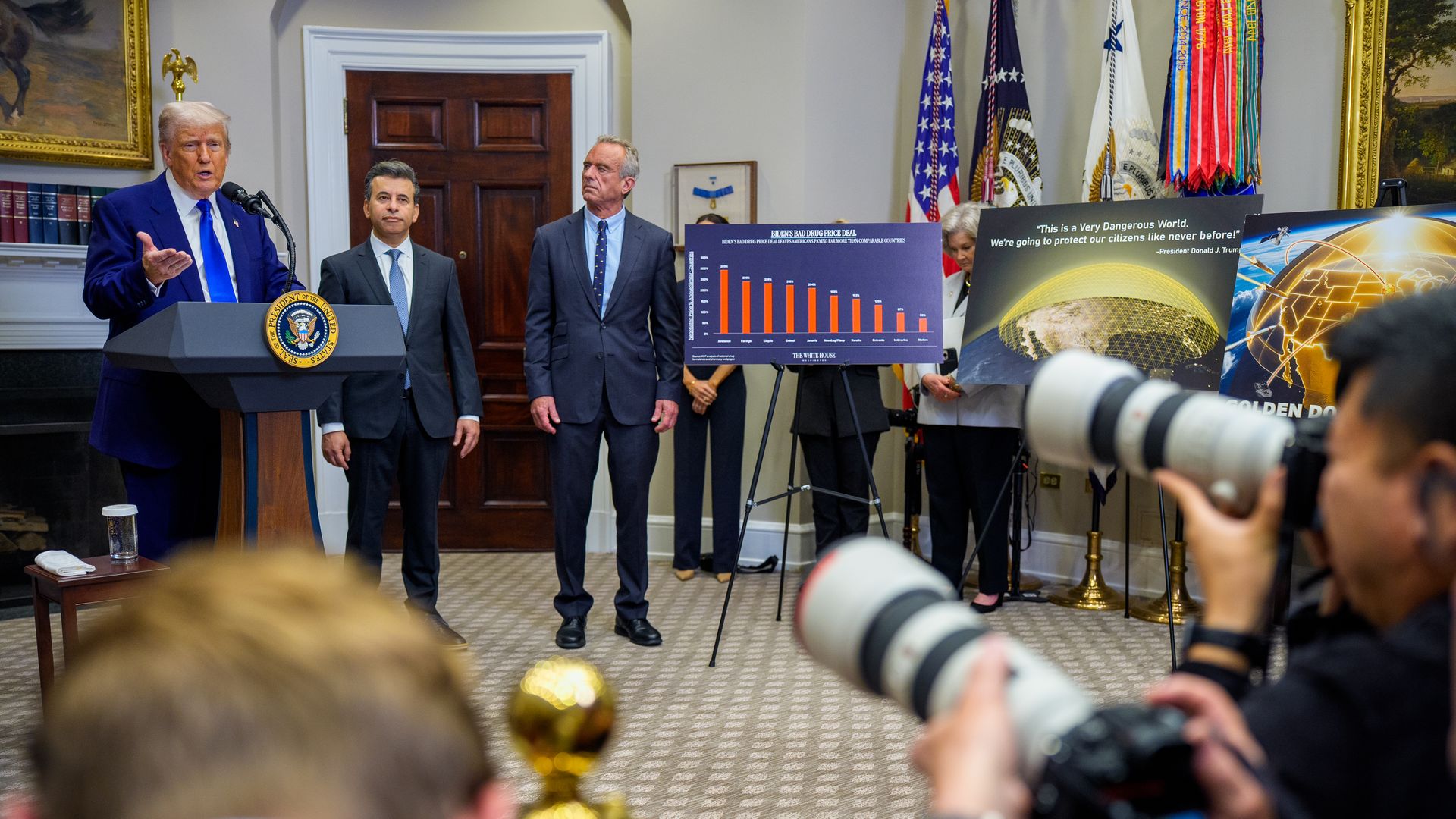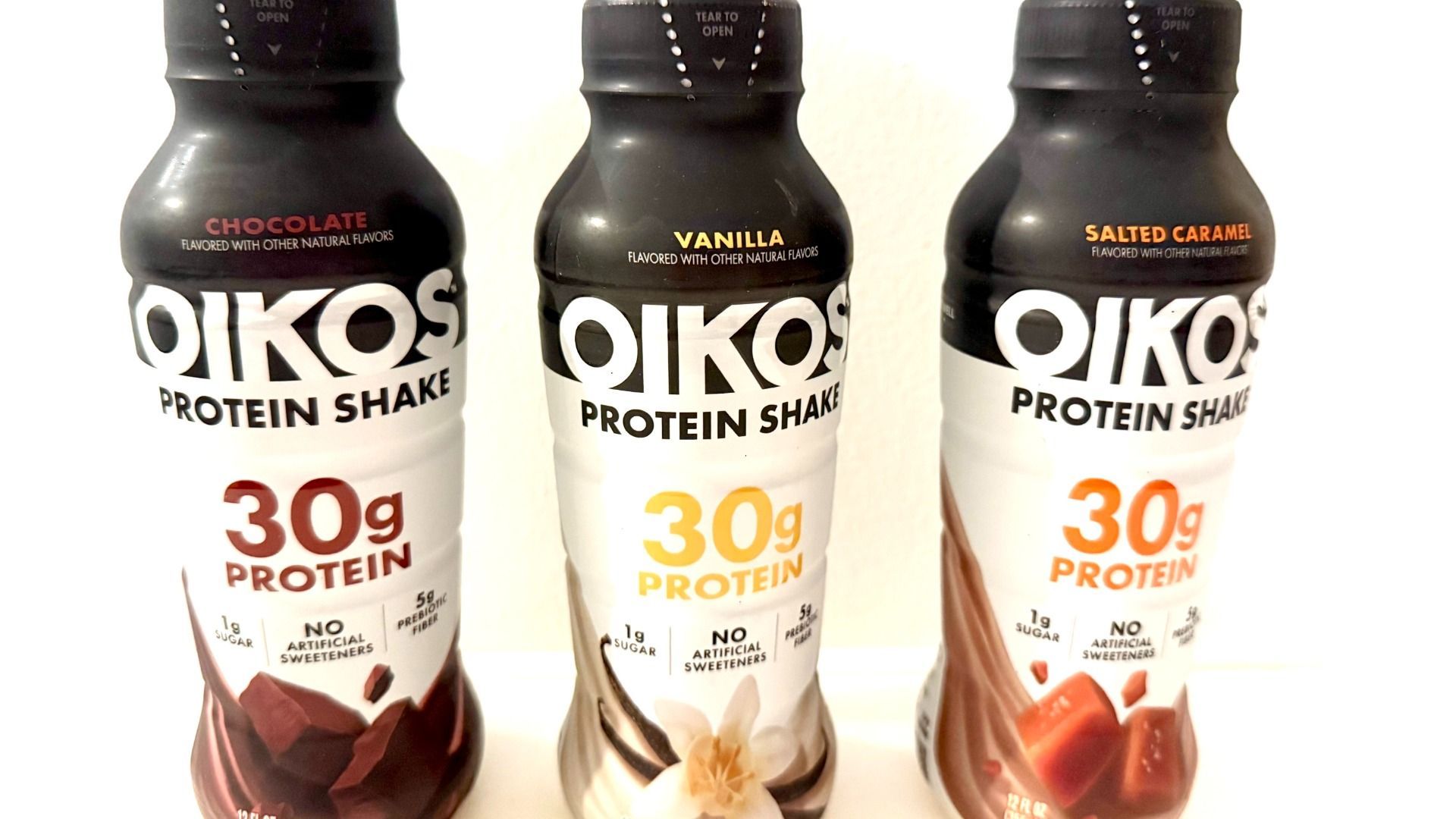|
||
| PRESENTED BY THE COALITION TO STRENGTHEN AMERICA’S HEALTHCARE | ||
| Axios Vitals | ||
| By Maya Goldman and Tina Reed · May 13, 2025 | ||
|
Happy Tuesday, friends. Today's newsletter is 1,276 words or a 5-minute read.
Situational awareness: Our Axios Pro Health Policy colleagues are covering the pivotal Medicaid debate in Congress this week. Check for updates here, or subscribe to get them sent to your inbox in real time. |
||
| 1 big thing: Pharma's nightmare scenario | ||
| By Caitlin Owens | ||

|
||
|
Illustration: Lindsey Bailey/Axios |
||
|
President Trump's bombshell executive order aimed at lowering U.S. drug prices is a step toward a worst-case scenario for the pharmaceutical industry. Some critics say the industry could have done more to avoid it, even though Trump's policies are causing turmoil in almost every sector of the economy. Why it matters: Trump's announcement could be the start of enormous global disruption for the pharmaceutical industry — or it's the least-bad version of what was on the table, depending on who you ask.
What they're saying: "The biopharmaceutical industry is working with President Trump and Capitol Hill on solutions to help patients access and afford the treatments they need," Alex Schriver, senior vice president of public affairs at the trade group PhRMA, said in a statement.
The big picture: Yesterday's announcement was sparse on details about how the administration plans to harmonize what the U.S. and other countries pay for drugs, meaning there's no way to know exactly how much trouble the pharmaceutical industry is in.
Yes, but: Pharma is far from alone in being on the losing side of Trump's economic policies, and is joined by industries that have bent over backward to curry favor with the administration. |
||
|
|
||
| 2. The roadblocks to Trump's drug price order | ||
| By Maya Goldman and Tina Reed | ||

|
||
|
Photo: Andrew Harnik/Getty Images |
||
|
The White House's executive order to lower drug prices is largely an exercise in applying leverage, rather than actual policymaking — and it may not amount to much, experts said. The big picture: President Trump says his directive will dramatically reduce drug costs for U.S. consumers, and quickly. But there are few details as to how he plans to accomplish that.
State of play: The order calls for drugmakers to voluntarily cut prices or face the threat of a "most favored nation" pricing regime that would peg the cost of their medicines to what's paid in other wealthy nations, where they often sell for less.
|
||
|
|
||
| 3. Where Americans have fluoridated water | ||
| By Alex Fitzpatrick | ||
 Data: CDC; Map: Alex Fitzpatrick/Axios Nearly 63% of the U.S. population was served by fluoridated community water systems as of 2022, per the latest CDC estimates. Why it matters: Fluoridation is once again becoming a political flashpoint, with Utah and Florida recently moving to ban the practice — a step encouraged by HHS Secretary Robert F. Kennedy Jr. The big picture: Dental and public health experts have long argued in favor of community fluoridation, wherein fluoride is added to public water supplies to help prevent tooth decay.
By the numbers: Washington, D.C. (100%); North Dakota (90.6%) and Kentucky (89.8%) had the greatest shares of residents served by fluoridated community water as of 2022, per CDC estimates.
The bottom line: People without easy access to fluoridated water can still get fluoride through other means — by using fluoridated toothpaste, for example (though Texas is now investigating toothpaste manufacturers over how they market such products). |
||
|
|
||
|
A MESSAGE FROM THE COALITION TO STRENGTHEN AMERICA’S HEALTHCARE |
||
| We need Medicaid for a healthy America | ||
|
|
||
|
Tell Congress: Don’t cut Medicaid for America’s children and families. The reason: Medicaid helps keep more than 30 million children across America healthy, including nearly half of all children with special healthcare needs. |
||
| 4. Catering to the GLP-1 crowd | ||

|
||
|
Oikos Protein Shakes are set to debut at stores across the country starting in May. Photo: Kelly Tyko/Axios |
||
|
High-protein yogurt brand Oikos is expanding beyond the dairy aisle with protein shakes geared to GLP-1 users, Danone North America shared exclusively with Axios. Why it matters: Food giants are rolling out new products to cater to the changing appetites of the growing number of people taking Ozempic, Wegovy, Mounjaro or Zepbound. The big picture: Danone joins other companies betting on the GLP-1 trend, which includes Nestlé and Conagra with frozen meals, Smoothie King with its GLP-1 menu and a wide-range of supplements.
|
||
|
|
||
| 5. Scant proof of Medicaid mooching | ||
| By Emily Peck | ||
 Recreated from CBPP; Chart: Axios Visuals Work requirements for Medicaid will reduce the number of eligible Americans covered under the health insurance program, according to experts and evidence from states that imposed them. Why it matters: Work requirements are part of a budget bill from House Republicans that would impose big cuts to the health insurance program for the poor that covers 21% of Americans. Where it stands: The bill would require Medicaid recipients who are under 65 years old, without dependents, to confirm they are working at least 80 hours a month. Another provision requires some to certify twice a year that they qualify for insurance.
By the numbers: There's little evidence that people are free-riding on Medicaid.
"Work requirements don't work," says Jennifer Wagner, director of Medicaid eligibility at the Center for Budget and Policy Priorities. The other side: The idea is to avoid subsidizing those who choose not to work, Rep. Brett Guthrie, (R-Ky.) said in a WSJ op-ed. |
||
|
|
||
| 6. Catch up quick | ||

